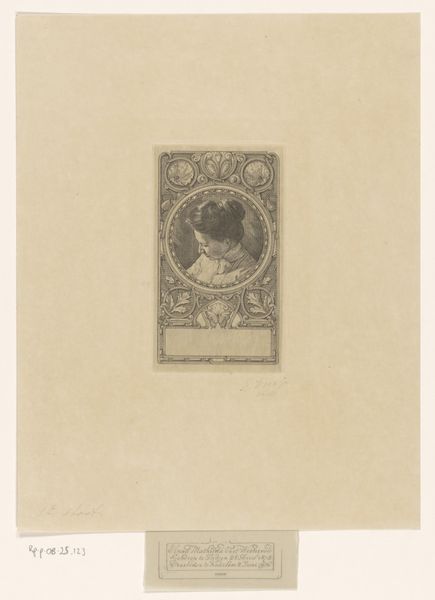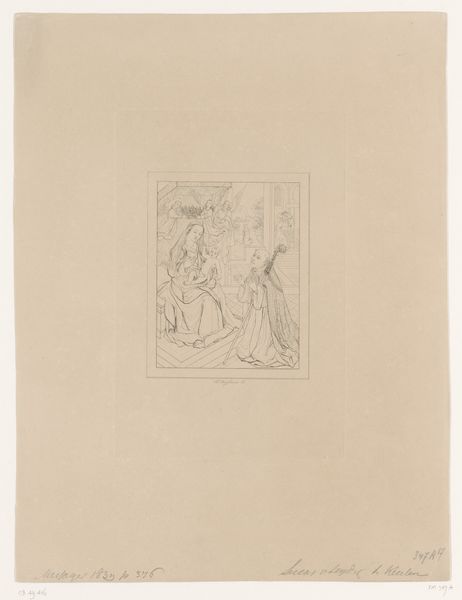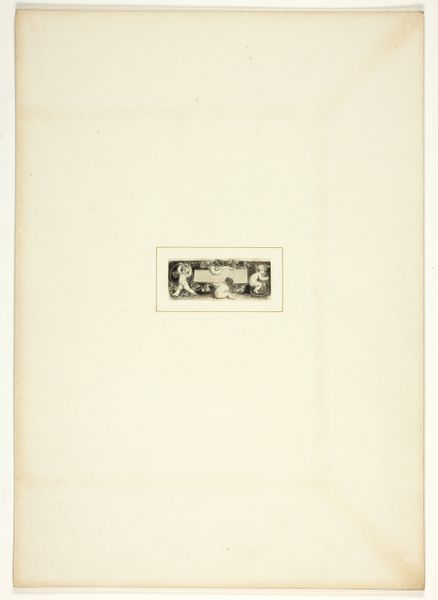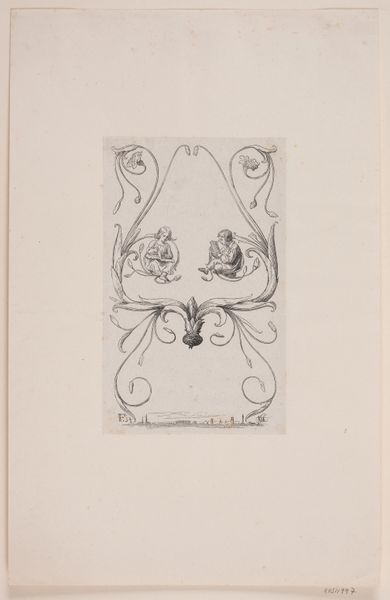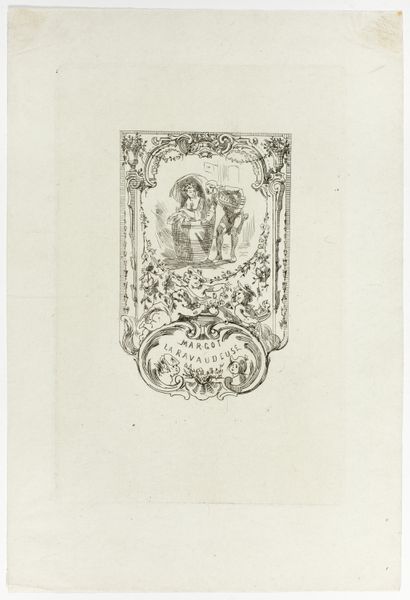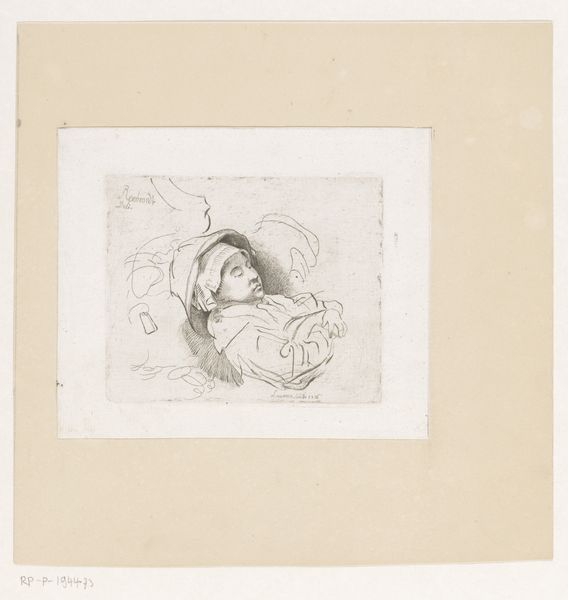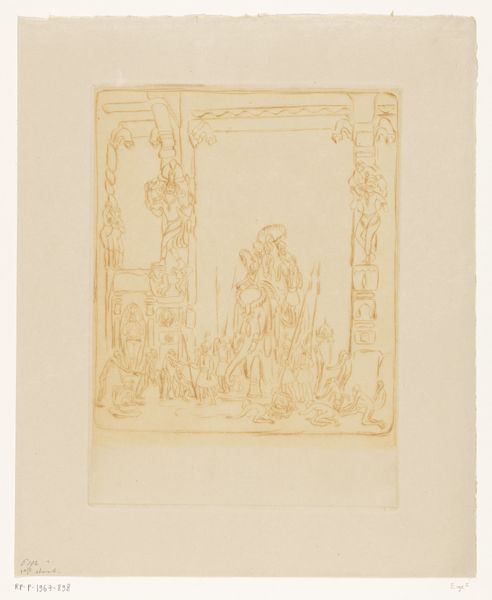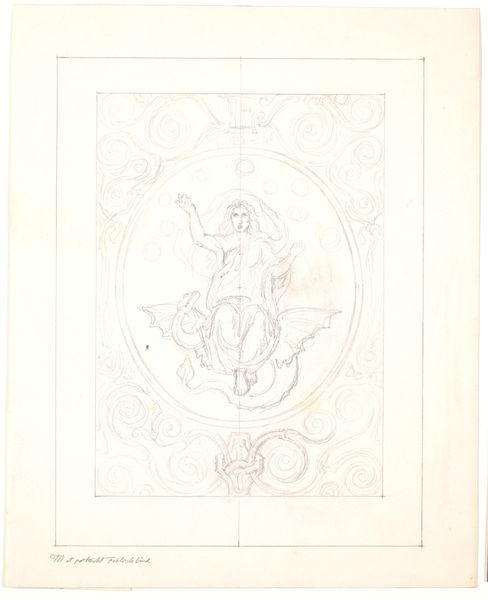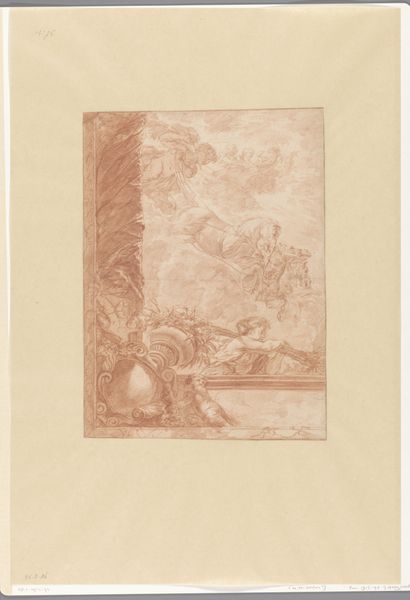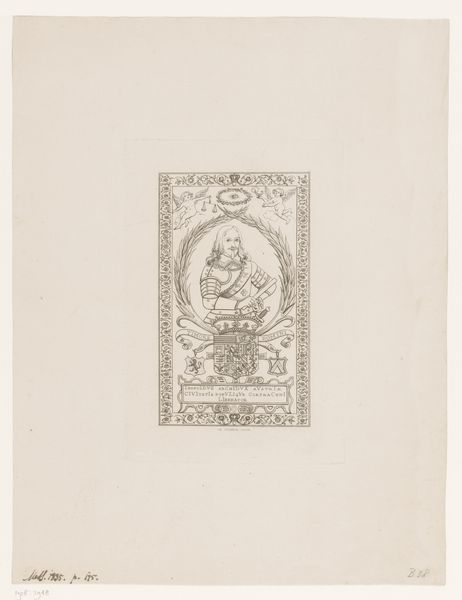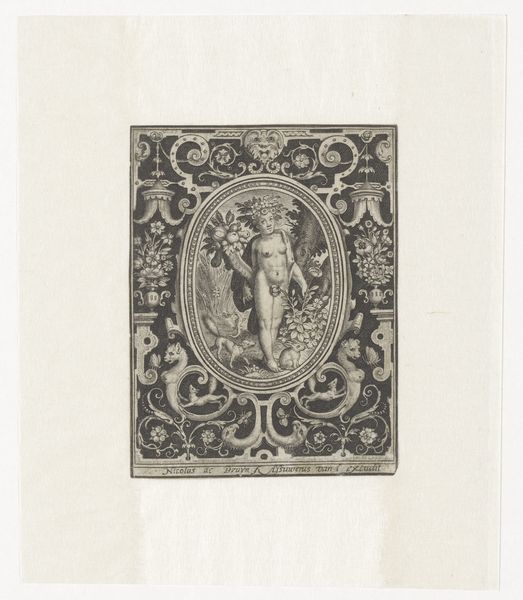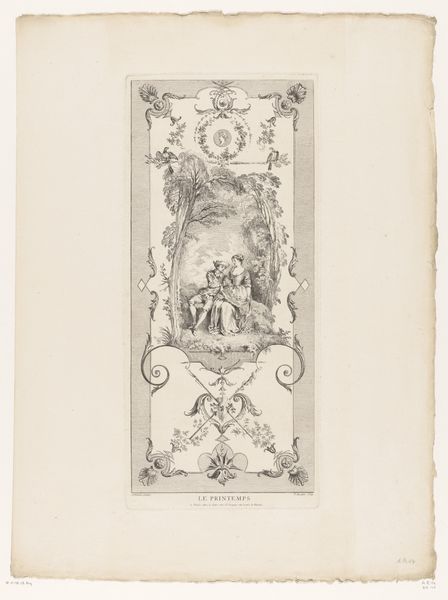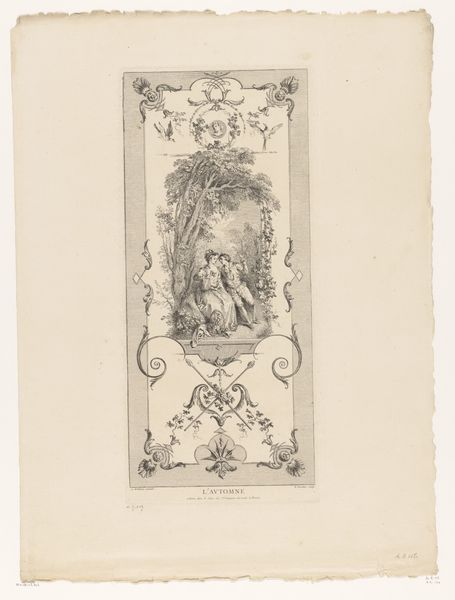
Dimensions: 325 mm (height) x 272 mm (width) (plademaal)
Curator: I’m struck immediately by the airy, almost dreamlike quality. The monochrome palette, combined with the delicate linework, suggests a sense of fleeting beauty. Editor: Indeed. We are looking at "Illustration til 'L'Amour et Psyché,'" created by Lorenz Frølich in 1862. The medium is described as engraving and watercolor on toned paper, and it resides here at the SMK, Statens Museum for Kunst. It's a Romantic piece. Curator: The composition, segmented into distinct vignettes framed by swirling organic forms, hints at a narrative structure. How do the historical depictions of Cupid and Psyche impact its reading? Editor: The resurgence of interest in classical mythology during the Romantic period shaped how artists and society viewed beauty, desire, and morality. Frølich's work participates in a dialogue about the nature of love in a rapidly changing society. This piece likely reflects a desire to imbue contemporary experience with the gravity and ideals associated with antiquity. The image likely appeared in an illustrated publication, spreading those ideas even more. Curator: I see your point, but what I find particularly interesting is the formal treatment of space. The areas around the active parts in the two little “windows” are starkly contrasted to a seemingly flat plane, allowing our focus to hone in. And the light, almost ethereal. Editor: Precisely. Artists like Frølich used mythology to encode messages, in ways both condoned by society, but also, in subversive and even radical terms. This romantic vision of mythology allowed the public discourse to express complex themes through safe and beautiful, albeit codified, narratives. This image romanticizes ancient stories in line with nineteenth-century sensibilities, and it is no mistake the viewer feels comforted by the softness. Curator: The piece really seems to invite introspection about our long relationship with myth and how we keep these ideas alive, if altered in any way. Editor: I agree; it serves as a bridge between the classical world and the evolving social and emotional landscape of the 19th century, inviting us to think about enduring human values.
Comments
No comments
Be the first to comment and join the conversation on the ultimate creative platform.
